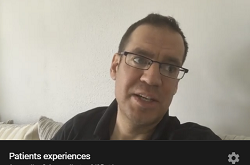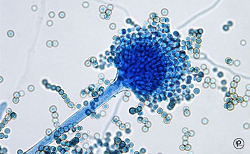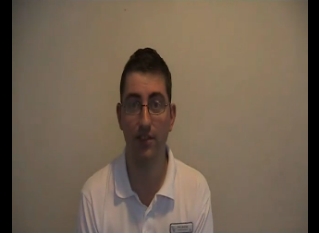Description:
In January 2016, the CEO of NETWORKS Sullivan Partnership, the economic development organization that serves Bristol, Bluff City, Kingsport and Sullivan County, contracted a viral infection called aspergillosis that landed the 52-year-old in Holston Valley Medical Center. He was placed in a drug-induced coma.
The experience was a “gift” that gave him a deeper sense of love, family and community, Walker said.
“I don’t get sick often,” he said Monday from NETWORKS’ Kingsport office. “I don’t miss work. I literally never missed a day of high school. So when I woke up in the intensive care unit hooked up to a ventilator with my mom — who lives six hours away — sitting beside me, I was confused to say the least.”
Aspergillosis is caused by a type of mold that, when left untreated, is usually fatal, according to the Mayo Clinic’s website. Walker, who had been sick since August 2015, explained that his doctor wasn’t looking for the virus because it normally attacks those with weakened immune systems.
“An infectious disease specialist told me that I was really not even a candidate to get the virus,” Walker said. “It usually only affects people whose immune systems have been compromised in some way — people in poor health or certain types of cancer survivors. We’ll probably never know how I got it — but fortunately they knew how to cure it — which is the thing that I’m really thankful for.”
Walker said he had been working long hours before he started feeling ill, but because he was pretty healthy he chalked his symptoms up to simple fatigue. After a few weeks of not getting any better, he visited an urgent care, where he was treated for allergies. By the beginning of winter, he was still sick so he made an appointment with his doctor.
“By November, I was so sick it was a struggle for me to climb the steps to my loft,” he said. “And once I was inside I would fall out from exhaustion so I went back to the doctor. He’d treat me and I’d get better for a little while. Then I’d get sick again only I’d be worse than I had been before. By January, there were several nights that I could barely catch my breath. One night about 11 o’clock I called Brian [Ritz, NETWORKS program manager] and asked him to take me to the hospital because it was so bad.”
Ritz, who arrived within minutes, said there was no way to describe the way he felt when he got Walker’s call.
“I was extremely worried when he called me,” he explained. “But when I saw Clay I knew he was a pretty sick guy and needed medical attention quickly.”
Walker was emotional as he recalled that night’s events.
“Brian took one look at me and said he was going to call an ambulance,” he said. “When the EMTs put the oxygen mask on me it was like giving a man in the desert a drink of water. The doctors told me that call to 911 probably saved my life.”
The last thing he remembers that night was seeing the ceiling and the lights in the emergency room. He gave Ritz his wallet and phone and asked him to check on him the following morning.
“My next conscious experience was waking up with my mother sitting beside my bed. Seeing the confusion on my face — she asked me what day it was and I didn’t know. That’s when I found it was Thursday and I had been in an induced coma for six days.”
That’s when he began to realize what it meant to feel the prayers of others, he said.
“I hope that’s one thing I never forget,” he said. “I could feel the prayers that had been prayed. Feeling those prayers was as real as feeling this table in front of me. I wish I had the words to adequately describe it.”
Walker said the first two weeks after he “woke up” were spent in the hospital. When he was released, he faced two months of recovery at home.
“When I started feeling better, the first person I called was my son, Ty,” said Walker again holding back tears. “I was lying in the hospital with this gross, coughing up this gross black stuff. I was thinking that I didn’t care if I got better. Then I thought about my son — he’s going to turn 26 next month — and I thought, ‘he’s not ready to be without a dad.’ He’s the most important person in the world to me. Thinking about him is what got me through this.”
He added that there was an overwhelming outpouring of support for him and his family during his hospital stay and illness.
A fan of country star Tim McGraw, Walker said there are two songs that he listens to differently since his ordeal. One is called “If I die today” the other is “Live like you were dying.”
“One says I wonder who I’d see crying standing over me and who would just send their regard,” Walker said. “The other talks about being the kind of friend I’d like to be. So now I hug people and tell them I love them more often than not. I’ve learned that it’s stupid to not to tell people how you feel about them. I also found out that the people that I considered friends considered me as a friend as well. And that means a great deal.”
Walker applauded his staff for the work they did while he was recovering and called them an amazing team.
“I’ve been in economic development for 20 years and this has been the best professional year of my life,” he said.
Walker said it’s unlikely he’ll ever get the virus again but he’s taking better care of himself so he can fulfill his purpose while he’s still here.
“I’ve lost about 18 pounds and am continuing to lose,” he said. “I work out and have gotten my blood pressure down. It’s something I have to work at but it’s worth it. God allows things in your life. And when those things happen we’re supposed to do something with it.”
He smiled when he said he believes that his purpose is to be a dad to his son, make an impact on this community and people in his life.
“We’re not promised tomorrow or even the end of the day,” he said. “So, what are we going to do while we’re here? I think it has everything to do with helping people. That doesn’t have anything to do with your bank account or accolades. It has everything do with our relationship to others.”
Medical and Patient education videos
-
Title
Description
-

Stewart Armstrong has chronic pulmonary aspergillosis and has undertaken to record a video of every day of his life for a month in order to help raise awareness of aspergillosis and how it impacts their daily lives.
These videos are interesting for a number of reasons – not least because patients often say that they don’t look unwell so many people don’t understand how serious aspergillosis is. Does Stewart look or act unwell?
See the month of vlogs in the playlist below, or go to Stewart’s YouTube page to watch more of his videos.
-

Global fungal killers and life-threatening infections
Fungi are everywhere, and a few species can cause very serious lethal infections. Fungal infections
-

This panel considers and debates one of the greatest obstacles to food security in many parts of the world: mycotoxin. Aflatoxin is a particularly dangerous mycotoxin produced predominantly by two Aspergillus fungi. It colonizes a variety of important food and feed crops both pre- and post-harvest, including groundnuts, tree nuts, maize, rice, figs and other dried foods, spices, crude vegetable oils and cocoa. Contaminated crops have significant health risks for both humans and animals, having been linked to retarded growth and development (stunting), immunosuppression and liver cancer. The aflatoxin issue has other, complex implications for food security and, by limiting farmers’ access to international markets, can lead to food waste and economic instability.
Panelists:
-John Lamb, Principal Associate, Abt Associates
-Dr. Kitty Cardwell, National Program Leader, USDA-NIFA
-Barbara Stinson, Senior Partner, Meridian Institute; Project Director, Partnership for Aflatoxin Control in Africa
-Moderator: Dr. Howard-Yana Shapiro, Chief Agricultural Officer, Mars, Incorporated -

The role of poorly maintained ventilation ductwork in spreading airborne infections is largely ignored because it is ‘out of sight out of mind’, but recent analysis by healthcare professionals confirms that the risks are increasing.
Ghasson Shabha will identify particular threats in healthcare facilities from dirty ductwork. He also points out that fewer than 5% of building air-conditioning systems have been inspected despite regulations making this mandatory. Dr Shabha will look at how planned cleaning strategies can reduce risks and how hospitals can use 3D building information modelling software to identify ‘infection hotspots’.
The healthcare environment can be described as a reservoir for potentially infective agents which can spread unpredictably in a whole array of ways particularly in ventilation and air-conditioning systems making it difficult to effectively control and manage, for those seeking timely information about the patterns of cross-infection. The severity of the problem has been highlighted extensively over the past decade, as part of wider umbrella of what was known as health care acquired infections (HCAIs). Airborne transmission extends over a wide spectrum, and includes many prevalent agents, inter alia Mycobacterium tuberculosis (TB),nosocomial MRSA, Aspergillus fumigatus, Serratia marcescens, norovirus, and other airborne infection.
Dr Shabha was speaking live from Birmingham and this CIBSE ASHRAE Group (cibseashrae.org) webinar was co-sponsored by the B&ES Ventilation Hygiene Group and the Institute of Healthcare Engineering and Estate Management (IHEEM).
-

Oliphant Science Awards – Year 1 project by Haruki Kurioka, Aleksa Novakovic and Bogdan Novakovic (St Andrew’s Primary School, Adelaide)
Food that we consume daily is rich in good bacteria and fungi. Yogurt, Yakult and Natto (fermented soybeans) are rich in bacteria. Cheeses (e.g. Brie & Blue cheese) and Koji contain fungi Penicillium and Aspergillus, respectively. Many Japanese and continental seasonings and dishes can be prepared with those products. Many kids and their parents don’t know much about good bacteria and fungi. First year students are here to tell us their story. Enjoy it!





